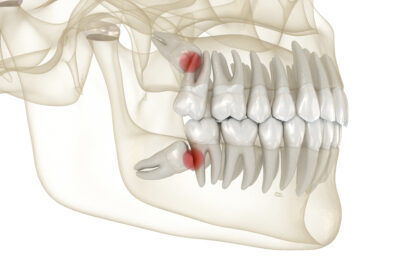Your jaw bone is responsible for supporting the teeth, aiding in chewing and speaking, and filling out the normal proportions of your face. If the jaw loses mass or density to resorption (a phenomenon where bone cells break down and are absorbed into the body via the blood) or as the result of a traumatic injury, then you might find yourself having difficulty performing everyday tasks normally. Today, we’re looking at why you might need a bone graft and taking a nuts-and-bolts tour of the procedure.
Who Might Benefit from a Bone Graft?
Far and away, the most common reason your dentist or oral surgeon might recommend a bone graft is in preparation for dental implant placement. When you lose a tooth as an adult, the area around the missing tooth begins to resorb almost immediately. A patient who lost one or more teeth years ago, but who is only now seeking to replace them with dental implants may not have sturdy enough bone tissue to support the implant post. A bone graft can help a person with weakened jaw bone tissue qualify for implants.
Other instances that might call for a bone graft include:
- Bone loss due to advanced gum disease.
- Correcting bone loss caused by cyst removal or tooth extraction.
- Reconstructing the jaw after trauma (like the kind sustained in a car collision), after a disfiguring disease (such as certain types of oral cancer), or to repair a congenital defect.
What Happens During a Bone Grafting Procedure?
A bone grafting procedure has two primary goals:
- To immediately replace missing bone tissue.
- To stimulate the growth of new bone tissue.
Before the procedure begins, your dentist may administer dental sedation, like nitrous oxide (or even oral conscious sedation if you have moderate of severe dental anxiety) to make sure you feel relaxed throughout the appointment. After numbing the graft area, he will create a flap to expose the graft site. Next he will place the grafting material. Common grafting materials include:
- Autogenous cells. These are your own bone cells, usually harvested from the back of the upper or lower jaw, the chin, or even the hip.
- Donor cells or cadaver cells.
- Synthetic bone grafting materials.
Before closing up the site, your dentist may also add a compound that further stimulates the regeneration of bone tissue. After the procedure, most patients report soreness at the graft site, which is easily managed using OTC pain medication. A small to medium sized bone graft will usually take at least three months to heal.
About Shawn Hofkes, DDS
With advanced training in oral and maxillofacial surgery and certification in oral and IV sedation, Shawn Hofkes, DDS is qualified to provide advanced dental services, including bone grafting, from our state-of-the-art dentist office in Cerritos, CA. To schedule your appointment or consultation with Dr. Hofkes, contact us today. We proudly serve patients of all ages from Cerritos, Lakewood, Long Beach, Buena Park, and all surrounding communities.














